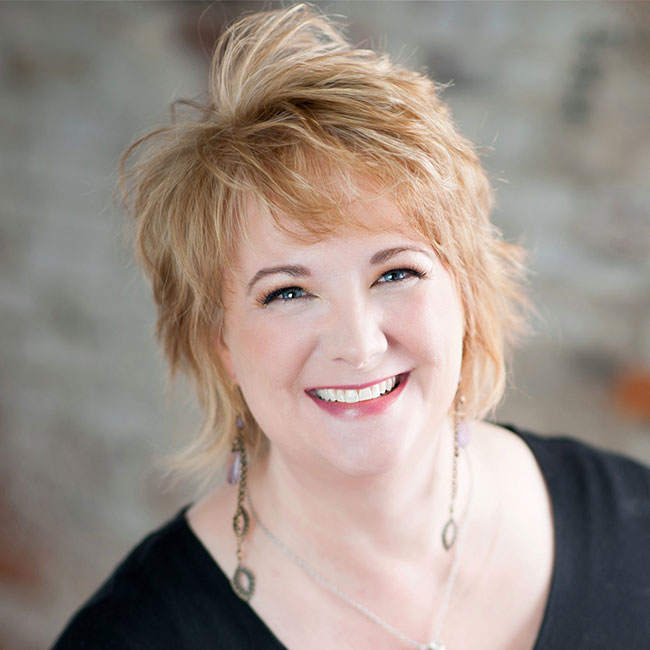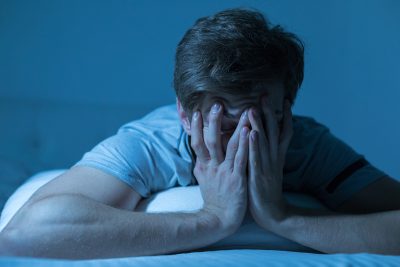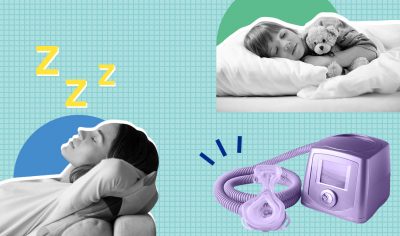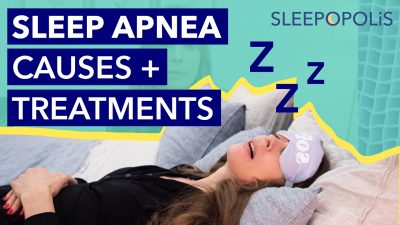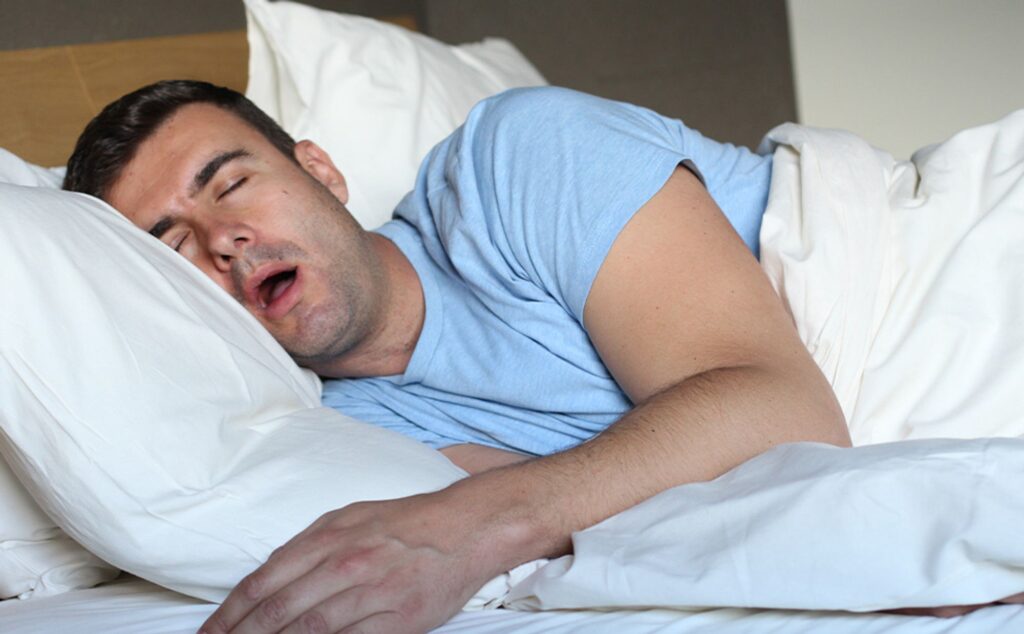
Note: The content on Sleepopolis is meant to be informative in nature, but it shouldn’t be taken as medical advice, and it shouldn’t take the place of medical advice and supervision from a trained professional. If you feel you may be suffering from any sleep disorder or medical condition, please see your healthcare provider immediately.
You may be familiar with the term sleep apnea and know that it’s some type of sleep disorder. But just how serious is it — and how do you know if you have it?
A 2019 study indicates more than 1 billion people worldwide suffer from mild to severe obstructive sleep apnea. (1) The American Medical Association notes that of the 30 million people in the U.S. who have the condition, only about 6 million are accurately diagnosed. (2)
If you feel sluggish most days, snore a lot, have someone notice lapses in breathing throughout the night or otherwise don’t feel well-rested after what you thought was a good night’s sleep, it may be time to learn how to make a sleep apnea recording and schedule a doctor’s appointment to review it.
Long Story Short
- Sleep apnea is a sleep-related breathing disorder. Recording yourself sleeping may help reveal potentially disruptive symptoms of sleep apnea such as difficulty breathing, restlessness, snoring, and stomach sleeping.
- A video might also capture another critical sign of the disorder, “see-saw” breathing. This is when the chest and belly move in opposite directions as a person works to overcome an airway obstruction.
- Sleep apnea often can’t be “cured,” but it can be managed effectively with lifestyle changes and medical approaches.
Why Be Concerned About Sleep Apnea?
This disorder is known to cause sleep inertia — which essentially means waking up feeling extremely groggy — (3) resulting in significant daytime dysfunction due to morning headaches, excessive sleepiness, brain fog, and difficulty concentrating. On a more serious note, chronic obstructive sleep apnea conditions are linked with many health problems, including memory loss, heart disease, diabetes, weight gain, and obesity. (4), (5), (6), (7)
Although it’s considered one of the most common sleep disorders, it’s actually a breathing disorder. When breathing stops, this episode is referred to as an apnea. If it lasts for at least 10 seconds, Dr. Audrey Wells, adult and pediatric sleep specialist, tells Sleepopolis “that causes drops in blood oxygen level — four percent or more from baseline — and awakenings from sleep.” She adds that “if you had drops in your blood oxygen level during the day, and your brain had to be interrupted to recover your breathing and bring up your oxygen level, people would be rushing to get that fixed.”
Dr. Maria Paula Guzman, a sleep disorder and obesity medicine specialist, says it surprises many patients to learn that sleep apnea can affect anyone. “It’s often linked to having excess body weight because a larger neck size can lead to narrowing of the airway,” she says. “However, sleep apnea can also be due to other abnormalities of the upper airway and may affect people of any age or body size.”
The Benefits of Recording Yourself Sleeping With Sleep Apnea
Wells says a sleep apnea recording might be helpful for anyone wondering if they have a sleep issue, or “has doubts despite other people reporting a problem during sleep.” Guzman notes that many people also notice how often — and how loudly! — they snore throughout the night. “Watching themselves on camera allows them to see and hear how much they snore and whether they experience gasping sounds or pauses in breathing, which would be telltale signs of obstructive sleep apnea.”
People who want to see how comprehensive treatment affects them may also be interested. National Jewish Health reported findings from a study that demonstrated through video just what happens when sleep apnea patients don’t wear their prescribed continuous positive airway pressure (CPAP) masks. “We really created a personal sense of urgency in these patients in order to change their behavior,” study author Mark Aloia, PhD, explained in a press release. (8) The result? Patients who observed themselves struggling to sleep were shocked by what they saw, and decidedly “used their CPAP masks almost twice as long as those who didn’t watch the video.” This created a significant difference in their overall health.

5 Tips for Recording Yourself Sleeping
Below are some pointers on how to document your slumber patterns and detect signs of sleep apnea in your personal sleep lab.
- Use a smartphone or tablet instead of a camera. First, clear out as much space as you can on your device, as you’ll likely record for 6–8 hours. Then, adjust your settings to a relatively low resolution, like 1080k or 720k.
To change the resolution on an Apple device, go to Settings > Photos & Camera > Tap either Record Video or Record SlowMo and change the resolution. For an Android device, open your camera application > Click the Settings button in the bottom left > Select Resolution.
- Charge your device. Hardly any camera will run for 8 hours on battery power, so be sure to keep your device connected to a power source overnight.
- Create a stable surface. You don’t need to purchase a tripod if you don’t have one. Lean your device against books, tape it to the nightstand — whatever will hold it steady. Position it so it’s close enough to see your face and chest. You want it to capture all your symptoms clearly.
- Check the lighting. Contemporary cameras don’t need a ton of light, but they do need some. Before hitting the pillow, do a test recording. Make sure your bedroom has just enough light so you’re easily seen in the video but not enough to keep you awake. Your camera might even have a night vision feature, which lets you lower the room lighting a bit more.
- Be mindful of sound, too. Since you don’t want anything to distort the authenticity of any sounds you might make, keep the device away from fans, vents, humidifiers, white noise machines, and other electronics.
The Importance of Talking to Your Doctor
So what symptoms might a sleep specialist notice in a sleep apnea recording? Probably the most prominent involves your breath stopping. Guzman says this might be a series of slight pauses or something more severe, such as gasping and choking.
“The throat closes completely for a few seconds, causing our breathing to stop and our oxygen levels to drop. (9) Then, our brain recognizes this and forces us to take a deep breath to return oxygen back to normal. Although we may not be fully aware of these episodes — after all, we’re asleep right? — this abnormal breathing pattern causes our brain to wake up repeatedly.” This means an individual with this disorder may “rest” for a full night, but feels extremely fatigued the next day due to fragmented, non-restorative sleep.
Snoring is another major clue. Although not always caused obstructive sleep apnea, loud or intermittent snoring “happens due to narrowing of the throat during sleep,” Guzman adds.
Wells says physicians evaluate other symptoms, such as:
- “See-saw” breathing, which is when the chest and belly move in opposite directions as a person works to overcome an airway obstruction
- Restlessness or tossing and turning related to problems with breathing
- A tendency to sleep on your stomach to help get the tongue out of the airway
- Vocalizations (groaning, sleep talking, etc) or teeth grinding related to untreated sleep apnea
“A sleep specialist is trained to look at a patient’s lifestyle, medical conditions, medications, and preferences to determine the best next steps for that individual,” Wells adds. “People often have more than one sleep condition that can be improved with treatment.”
The STOP-Bang Test
After reviewing your sleep apnea recording, your specialist may use a screening tool called the STOP-Bang test. (10)
“The STOP-Bang test is a short screening questionnaire that checks for factors commonly seen in patients with sleep apnea that helps estimate how likely it is that someone may have this condition,” Guzman explains. “It works as a tool for initial assessment, but a formal diagnosis requires a person to undergo a sleep study evaluation.” Factors include:
S.T.O.P.
- Snoring
- Tiredness
- Observed pauses in breathing
- Elevated blood pressure
B.a.n.g.
- Body mass index: more than 35 kg/m2
- Age: over 50
- Neck circumference: greater than 16 inches
- Gender: usually male
“Answering three or more questions in the affirmative on the questionnaire indicates a higher risk for obstructive sleep apnea. However, scores under three do not mean you have no risk,” Wells notes. (11) “For example, this assessment isn’t particularly sensitive for sleep apnea in women, which often looks different than sleep apnea in men.” (12) Additionally, a negative STOP-Bang screening doesn’t necessarily put you in the clear for the disorder.
Sleep Apnea Treatment Options
For an official diagnosis of sleep apnea, both Guzman and Wells recommend an overnight sleep study in a lab. Then, treatment options may include various lifestyle and medical approaches.
Guzman suggests lifestyle modifications such as weight reduction, special pillows for side-sleeping, a CPAP device, or oral appliance therapy, which is a device made by a dentist to reposition the jaw and tongue to open the airway.
“There are several underlying causes of obstructive sleep apnea. Most cases are chronic, and sleep apnea can worsen over time,” Wells says. “However, some individuals get resolution of their sleep apnea with weight loss, surgery, or a combination of treatments.”
FAQs
If I snore, does that mean I have sleep apnea?
Not necessarily, although it’s a possibility. People snore for other reasons, too, such as allergies, medications and alcohol, sleeping position, and throat type, to name a few.
Is there a cure for sleep apnea?
“It’s hard to predict who will enjoy a cure since there are several underlying causes of obstructive sleep apnea,” Wells says. “Fortunately, there are effective treatments available so that sleep apnea can be eliminated each night — as long as the treatment is in place.”
The Last Word From Sleepopolis
A sleep apnea recording, even if only for a night or two, may be just evidence you need to understand what’s racking up your sleep debt. Guzman says treating sleep apnea can greatly improve a person’s quality of life and reduce the risk of developing associated health conditions.
“Nearly 40 percent of Americans aren’t getting the recommended amount of sleep. But people often have more than one sleep condition that can be improved with treatment,” Wells adds. “Many options for treating sleep apnea exist, and it’s most often a trial-and-error process. However, with adequate support, education, and expertise, I believe every person can uncover which approach is the best for them.”
Sources
- Benjafield AV, Ayas NT, Eastwood PR, et al. Estimation of the global prevalence and burden of obstructive sleep apnoea: a literature-based analysis. Lancet Respir Med. 2019;7(8):687-698. doi:10.1016/S2213-2600(19)30198-5
- A, Berg S. What doctors wish patients knew about sleep apnea. American Medical Association. April 1, 2022. April 2022.
- Kumagai, H., Sawatari, H., Kiyohara, Y. et al. Nocturnal hypoxemia is related to morning negative affectivity in untreated patients with severe obstructive sleep apnea. Sci Rep 12, 21262 (2022). doi.org/10.1038/s41598-022-25842-7
- Sleep apnea creates gaps in life memories. ScienceDaily. January 31, 2019. Accessed November 9, 2024. https://www.sciencedaily.com/releases/2019/01/190131101103.htm.
- Obstructive sleep apnea in cardiovascular disease: A Review of the Literature and Proposed Multidisciplinary Clinical Management Strategy December 2018. https://www.ahajournals.org/doi/10.1161/JAHA.118.010440
- Muraki I, Wada H, Tanigawa T. Sleep apnea and type 2 diabetes. J Diabetes Investig. 2018;9(5):991-997. doi:10.1111/jdi.12823
- Carneiro-Barrera A, Amaro-Gahete FJ, Guillén-Riquelme A, et al. Effect of an Interdisciplinary Weight Loss and Lifestyle Intervention on Obstructive Sleep Apnea Severity: The INTERAPNEA Randomized Clinical Trial. JAMA Netw Open. 2022;5(4):e228212. doi:10.1001/jamanetworkopen.2022.8212
- National Jewish Health. Study reports patients more likely to wear “CPAP” mask after watching video of their own struggle” T. National Jewish Health. July 11, 2017. Accessed November 9, 2024. https://www.nationaljewish.org/about/news/press-releases/2017/cpap-mask-study.
- Slowik JM, Sankari A, Collen JF. Obstructive Sleep Apnea. [Updated 2022 Dec 11]. In: StatPearls [Internet]. Treasure Island (FL): StatPearls Publishing; 2024 Jan-. Available from: https://www.ncbi.nlm.nih.gov/books/NBK459252/
- Oshita H, Ito N, Senoo M, Funaishi K, Mitama Y, Okusaki K. The STOP-Bang Test Is Useful for Predicting the Severity of Obstructive Sleep Apnea. JMA J. 2020;3(4):347-352. doi:10.31662/jmaj.2020-0002
- Chung F, Abdullah HR, Liao P. STOP-Bang Questionnaire: A Practical Approach to Screen for Obstructive Sleep Apnea. Chest. 2016 Mar;149(3):631-8. doi: 10.1378/chest.15-0903. Epub 2016 Jan 12. PMID: 26378880.
- Sleep apnea and women. National Heart Lung and Blood Institute. Accessed November 9, 2024. https://www.nhlbi.nih.gov/health/sleep-apnea/women
Audrey Wells, MD, founder, Super Sleep MD. Personal interview. November 7, 2024.
Maria Paula Guzman, MD, founder, Sleep and Obesity MD. Personal interview. November 7, 2024.
